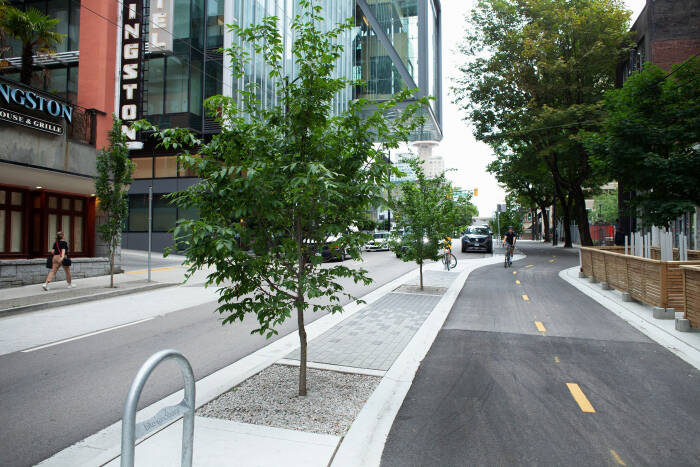University of Victoria researchers are experimenting with various types of soil and tree-planting practises to protect people and combat extreme heatwaves in Vancouver.
This new project is one of the five B.C. climate solutions research projects receiving $180,000 by the Pacific Institute for Climate Solution (PICS) over the next three years.
“Our overarching goal is to reduce the heat island and effect, and reduce the extreme temperatures that we’re seeing in Vancouver,” says UVic Mechanical Engineering Prof. Caterina Valeo. “It’s been shown that a single tree can actually modify the local micro-climate, making the vicinity noticeably cooler.”
UVic will be joined by University of Calgary researchers to come up with an ideal combination to boost trees’ benefits to the climate and to society.
Concrete, asphalt and vehicle emissions combine to create urban heat islands, but trees have been shown to reduce the urban surface temperature through shading, according to PICS. This is done through the channeling of air currents and through trees’ evapotranspiration, when the water is transferred from the land to the atmosphere.
“The path forward is not without barriers,” said Sylvie Spraakman, senior water resources manager for the City of Vancouver. “One big challenge that we run into is that the City of Vancouver is already very developed and it’s difficult to find the space to plant new trees. Trees are seen as the ‘nice to have’ and not the ‘absolutely necessary.’ The issue is transforming the narrative to one which stresses that urban forests are essential for adapting to climate change.”
Results from the project will be used to develop guidelines and policies in Vancouver for designing, monitoring, operating and maintaining a type of tree planting called trenches. Vancouver will also use the project’s findings to create other strategies to reduce urban heat islands both now and in the future.
ALSO READ: West Shore trout testing reaffirms creeks not ‘just a ditch’ but watersheds

